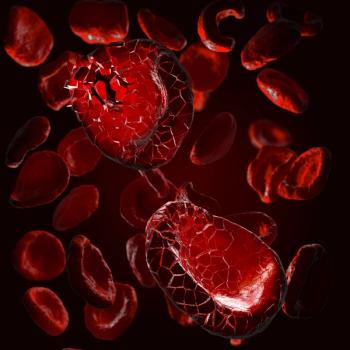
Oncology NEWS International
- Oncology NEWS International Vol 11 No 3
- Volume 11
- Issue 3
Involved-Field RT Is Effective in Hodgkin’s Disease
ORLANDO-European researchers have found involved-field and extended-field radiotherapy following chemotherapy to be equally effective in treating patients with intermediate-stage Hodgkin’s disease. Andreas Engert, MD, University of Cologne, Germany, reported the results of the multicenter, international study at the 43rd Annual Meeting of the American Society of Hematology (abstract 3199).
ORLANDOEuropean researchers have found involved-field and extended-field radiotherapy following chemotherapy to be equally effective in treating patients with intermediate-stage Hodgkin’s disease. Andreas Engert, MD, University of Cologne, Germany, reported the results of the multicenter, international study at the 43rd Annual Meeting of the American Society of Hematology (abstract 3199).
The findings are the final analysis of the HD8 trial of the German Hodgkin’s Lymphoma Study Group (GHSG). More than 8,500 patients have been enrolled in GHSG since its inception more than 20 years ago. Dr. Engert said that half of all German patients with Hodgkin’s disease are enrolled in a clinical trial and an additional 45% are treated according to trial protocols by their physicians.
At the time the HD8 trial began in the early- to mid-1990s, the standard protocol for patients with intermediate-stage Hodgkin’s disease included four cycles of chemotherapy followed by extended-field radiation.
"The problem was the high toxicity with the larger field, including second malignancies turning up later in the course of the disease," Dr. Engert said. Prior GHSG trials found 20 Gy, 30 Gy, and 40 Gy extended-field radiotherapy to be equally effective, given after two double cycles of COPP-ABVD chemotherapy. "The question then arose," he said, "‘Is it necessary at all to have a large, extended field?’"
The researchers randomized 1,136 patients to receive two double cycles of COPP/ABVD and either 30 Gy extended-field plus 10 Gy bulk radiotherapy or 30 Gy involved-field plus 10 Gy bulk radiotherapy.
Due to death, progression, toxicity, and other reasons, 70 patients dropped out before radiotherapy began, leaving 533 in each cohort. Patients were equally balanced by age, sex, and disease stage. "There were substantially more acute toxicities in the extended-field group," Dr. Engert said. Toxicities more common in the extended-field patients included leukopenia, thrombocytopenia, nausea, and pharynx and stomach distress.
"Response was the crucial question," he said. "Could a smaller field be equally effective?" Results showed no difference in complete and partial response between the two cohorts, and no significant difference in progressive disease. With a median follow-up of 5 years, the groups showed no difference in survival: 91.2% in the extended-field group and 93.8% in the involved-field group.
"We regard four cycles of chemotherapy plus involved-field radiotherapy as the new standard for patients with intermediate-stage Hodgkin’s disease," Dr. Engert concluded.
Articles in this issue
almost 24 years ago
Bush to Complete 5-Year Doubling of NIH Budgetalmost 24 years ago
CAD Accurate in Digital Imagesalmost 24 years ago
Campath-1H Safe and Effective in Refractory B-CLLalmost 24 years ago
FDA Approves Orfadin for Hereditary Tyrosinemia Type 1almost 24 years ago
Allovectin-7 Immunotherapy Active in Metastatic Melanomaalmost 24 years ago
HAART Ups Survival in Primary CNS Lymphoma Patientsalmost 24 years ago
DX-8951f/Gemcitabine Safe, Active in Advanced Solid Tumorsalmost 24 years ago
Pseudomonas aeruginosa Infections After Transplant Rare But Deadlyalmost 24 years ago
ODAC Recommends That FDA Approve Zometa for Bone Metastasesalmost 24 years ago
CAD Equivalent to Double-Read Mammogram ScreeningNewsletter
Stay up to date on recent advances in the multidisciplinary approach to cancer.

















































































